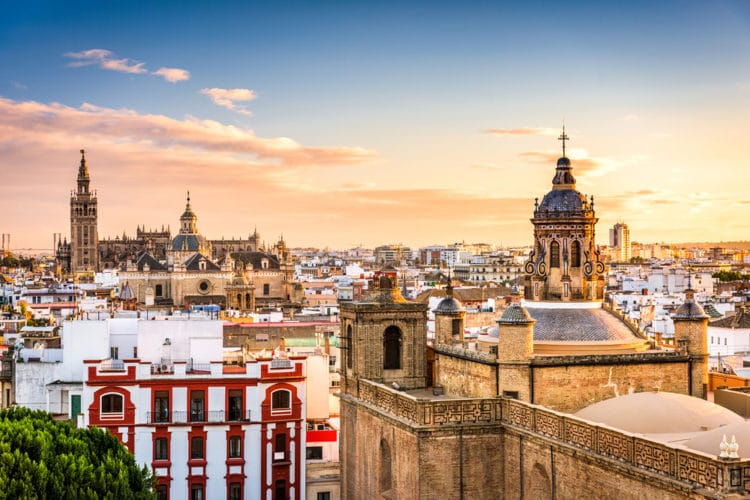One of Spain’s most famous cities, Seville, welcomes numerous tourists annually. Some visit for an extended stay, while others can only dedicate a few hours to its world-renowned attractions. What to see in Seville in one day on your own? It depends on your preferences. You might be interested in ancient churches, the Flamenco Museum, theaters, or the bullfighting arena.
Or perhaps you’re fascinated by the architectural heritage of the Moorish period, like the Golden Tower? Maybe you’d prefer a leisurely stroll along the waterfront, exploring squares, cafes, and shops… There are dozens of attractions here. Let’s talk about the most interesting ones.
Guadalquivir River Promenade
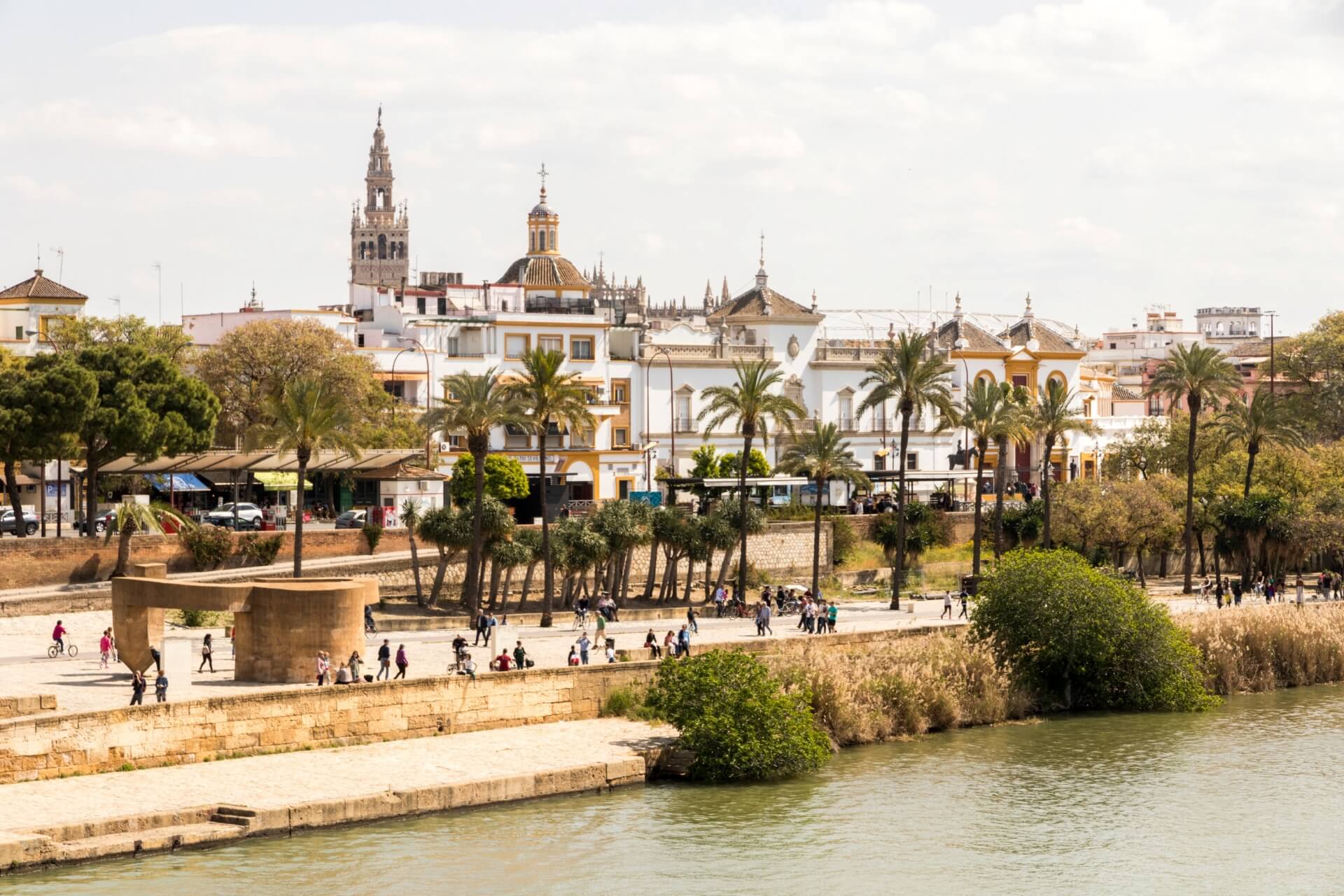
Perhaps this walk is the best way to start exploring Seville’s attractions. It’s similar to looking at St. Petersburg from the Neva River, revealing a unique, enchanting panorama. Prepare for this walk by setting out in the morning or evening when it’s not too hot, and wear comfortable shoes.
The promenade is quite extensive—almost 5 km in the historic city center alone. During the walk, you’ll alternate between walking on the road and descending steps to the water. You can rent a bicycle, as there are special paths for cycling. And don’t forget your camera; you’ll see many attractions along the way.
You’ll have a view of the bullfighting arena, the Golden Tower, and the famous “Generation 27” fountain. You’ll also see the university buildings and the Lope de Vega Theater from an unusual angle. The walk can end in the beautiful Maria Luisa Park.
Maestranza Bullring
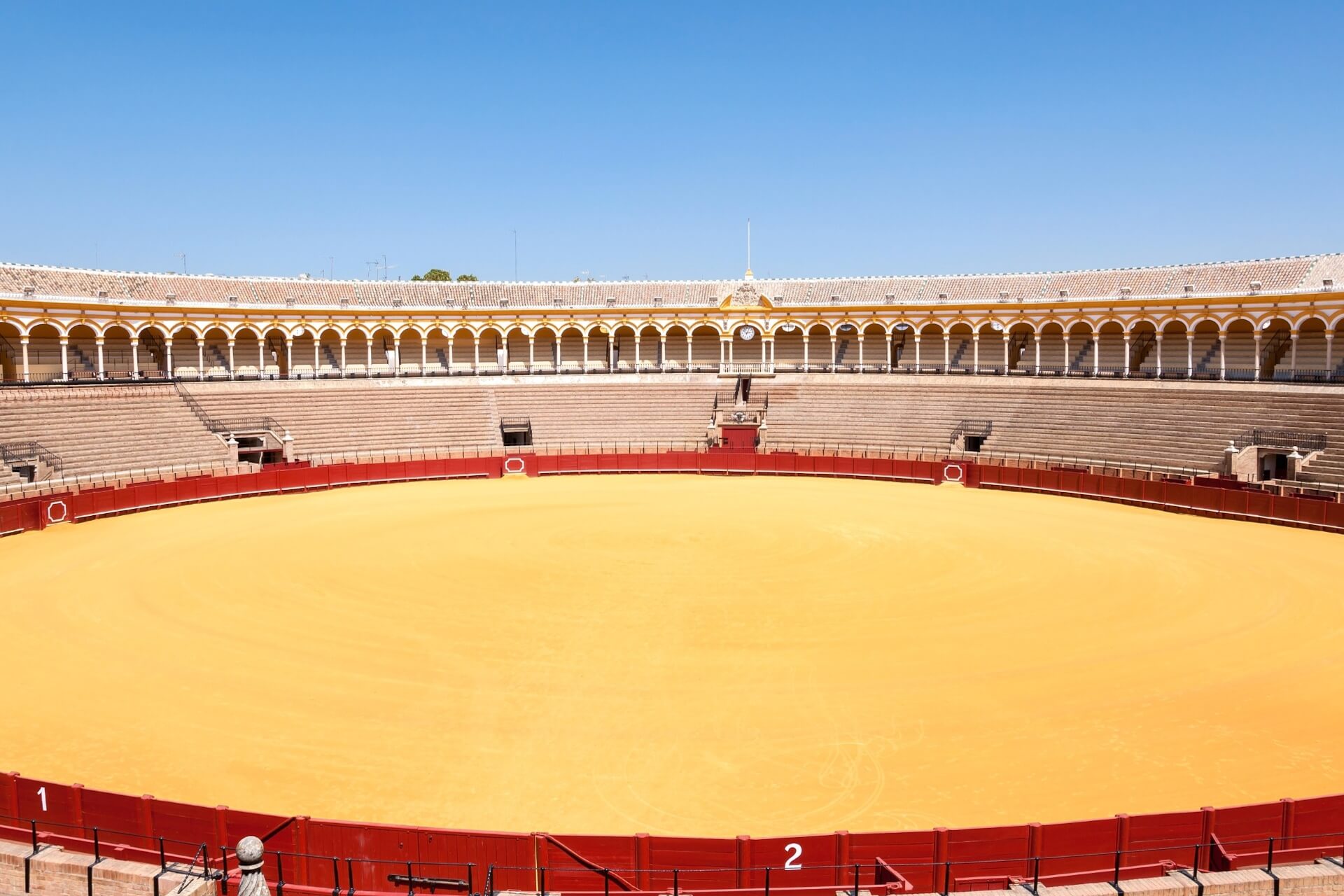
Bullfights have always been immensely popular in Spain. Initially, arenas were square, but this wasn’t always practical. Not all bulls were brave enough to face the matador. Often, the animals would hide in a corner, making it difficult to coax them out. Modern arenas are circular. Maestranza, built in the mid-18th century, has an oval shape, making it unique.
Another interesting fact: the first on-foot bullfight occurred here. Typically, such a fight involved a person on horseback. Even if you’re not a fan of such spectacles, it’s worth visiting the arena. Maestranza is beautiful, with a royal box. There’s also a nearby museum with many bullfighting-related exhibits, including a cloak signed by Pablo Picasso.
Maestranza Theater

The Royal Symphony Orchestra rehearses and performs here. The theater is one of Spain’s most renowned, and getting tickets can be challenging. Although the theater can accommodate about 1,800 spectators, tickets should be booked in advance. The theater’s state-of-the-art technology ensures the full beauty of musical works is conveyed.
Few European theaters can boast such equipment, allowing for the most complex productions to be appreciated by even expert audiences. The theater’s location is advantageous—on the Guadalquivir River, in a historic district, near hotels, cafes, and shops. So, a visit to the opera can be paired with other pleasures, like shopping.
Torre del Oro (Golden Tower)
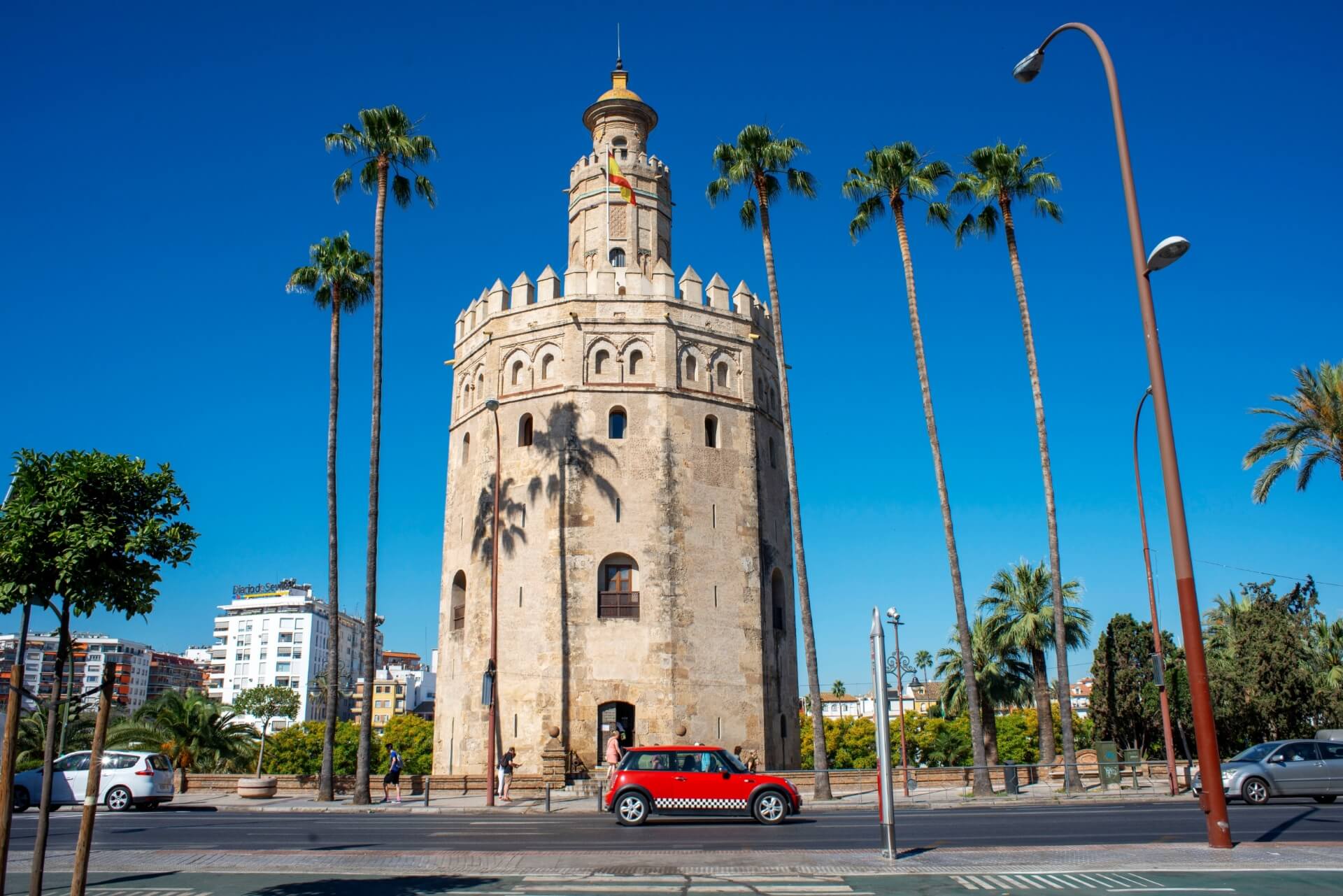
One of Seville’s most famous landmarks, the Golden Tower, was built in the early 13th century. It’s a monument of Moorish architecture, originally serving as a lighthouse, hence its riverside location. The tower was later used as a prison, a gunpowder store, and offices.
In the 18th century, an earthquake damaged the tower, and it was restored in the late 19th and early 20th centuries. Today, it houses a Maritime Museum, and you can climb to the top for a panoramic view. The tower’s name likely comes from its white clay bricks, which gleamed like gold when lit by the sun or moon. The Golden Tower appears in many films.
Hospital de la Caridad (Hospital of Charity)
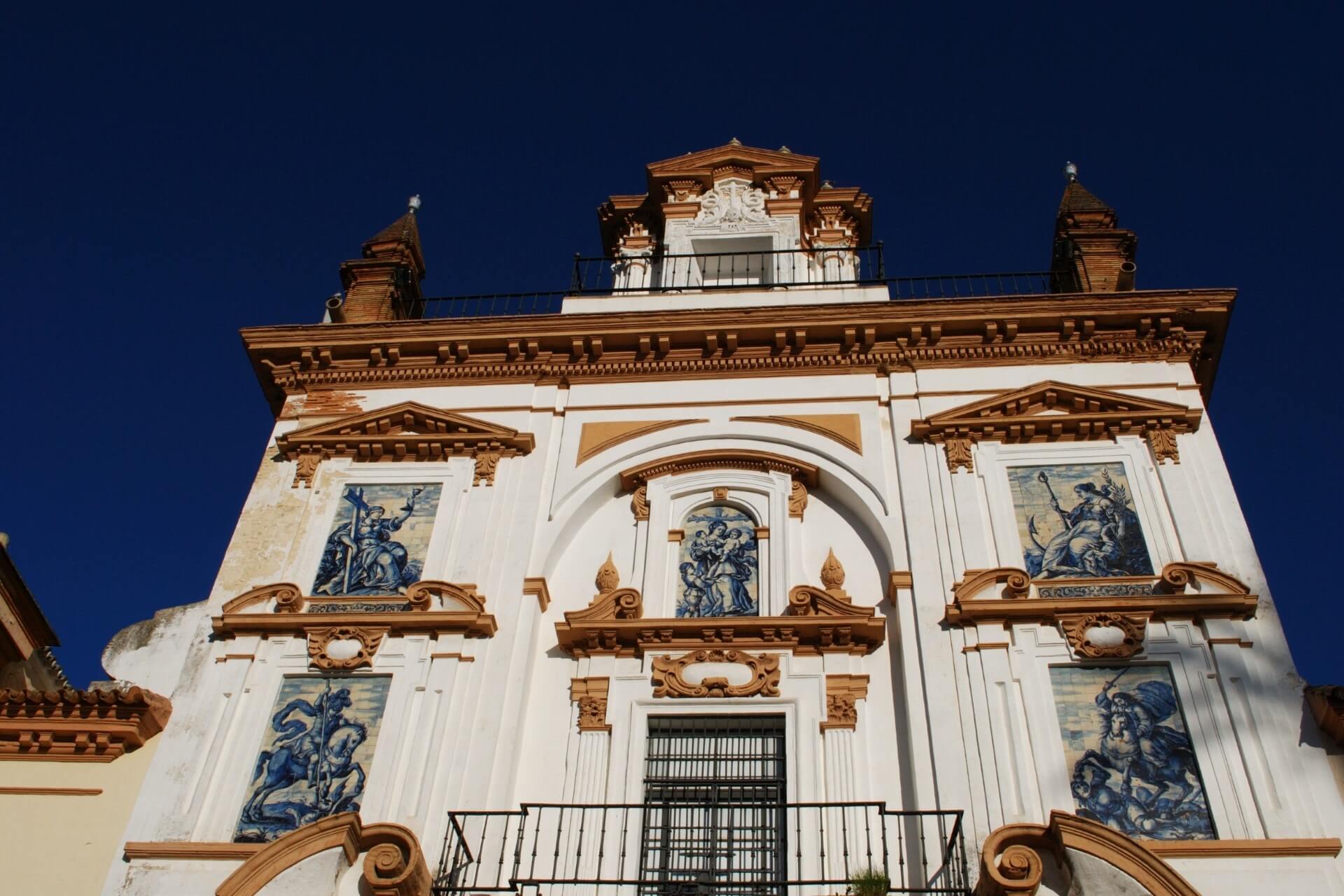
This beautiful medieval building has been remarkably well-preserved. Miguel de Mañara, who led a riotous life before experiencing a vision of his own funeral, proposed the idea of a hospital for the poor in the mid-17th century. His statue stands in the garden in front of the hospital.
Construction was expedited by royal donations, and the architect Francisco Ruiz de Escalona later expanded it significantly. The hospital became very popular, and its entrance tiles feature symbolic representations of Faith, Hope, Love, and saints George and James. The courtyard is beautifully decorated with fountains, and the building houses an exhibition of valuable paintings.
Archivo General de Indias (General Archive of the Indies)
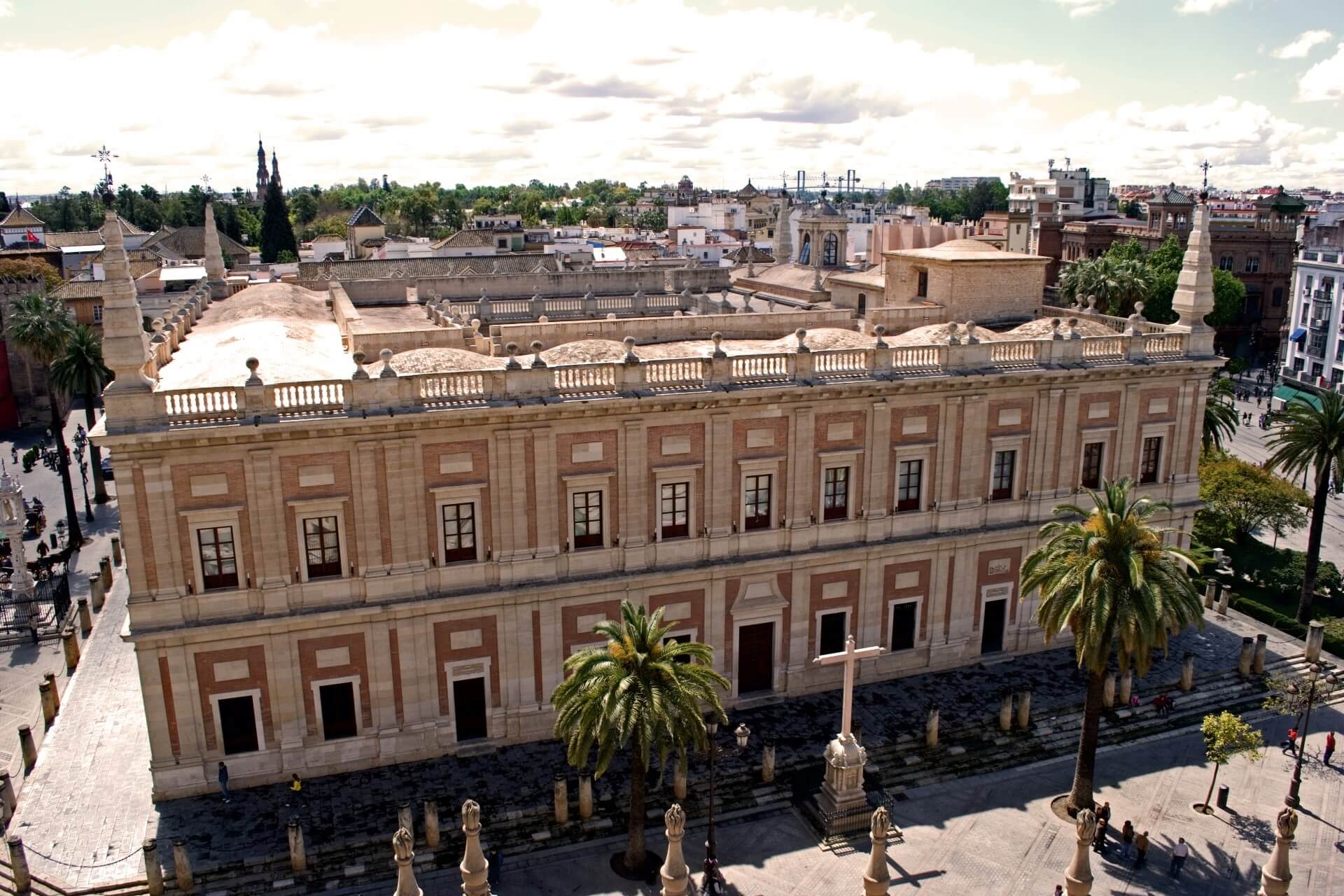
While scholars will marvel at its contents, tourists will first admire the building itself. It houses numerous documents related to the history of the Spanish Empire in the Americas and the Philippines. The Renaissance-style building was designed by the Escorial architect Juan de Herrera in the late 16th century for the local merchants’ guild.
The archive was moved here in the late 18th century. The shelves contain about 9 km of documents, totaling around 80 million pages.
Seville Cathedral
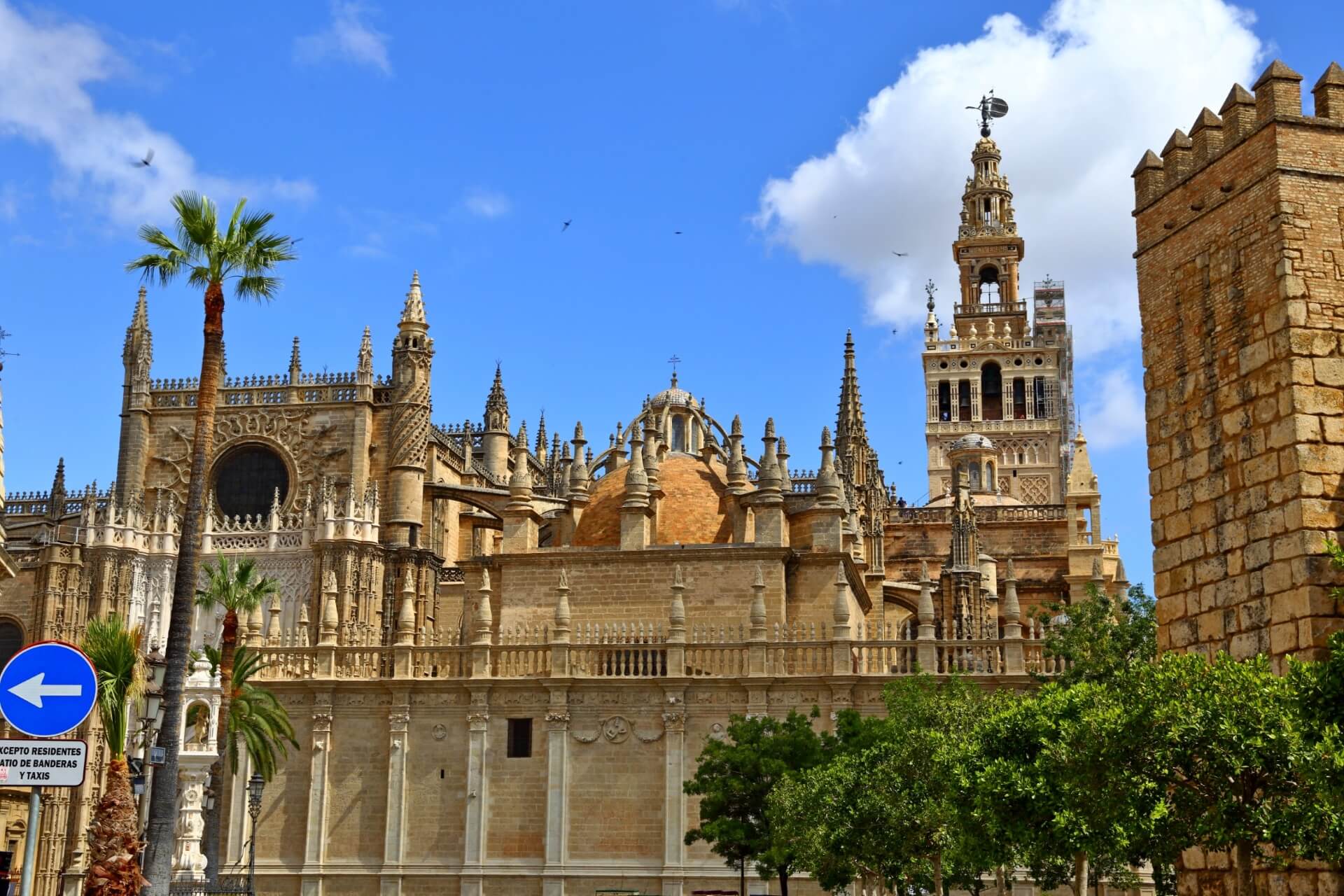
A true gem of Seville, one of the world’s largest basilicas, the cathedral’s construction began in the early 15th century and spanned four centuries. The basilica stands on the site of a former mosque. Built in the Neo-Gothic style, it is over 100 meters long and more than 70 meters wide. The interior houses many treasures, from unique grills to icons and masterpieces of painting and architecture.
Visitors come to venerate the tomb of Christopher Columbus, who is buried here, along with other significant figures in Spanish history. The cathedral has nine doors, and inside, be sure to visit the Chapter Hall to see famous sculptures.
Giralda Tower
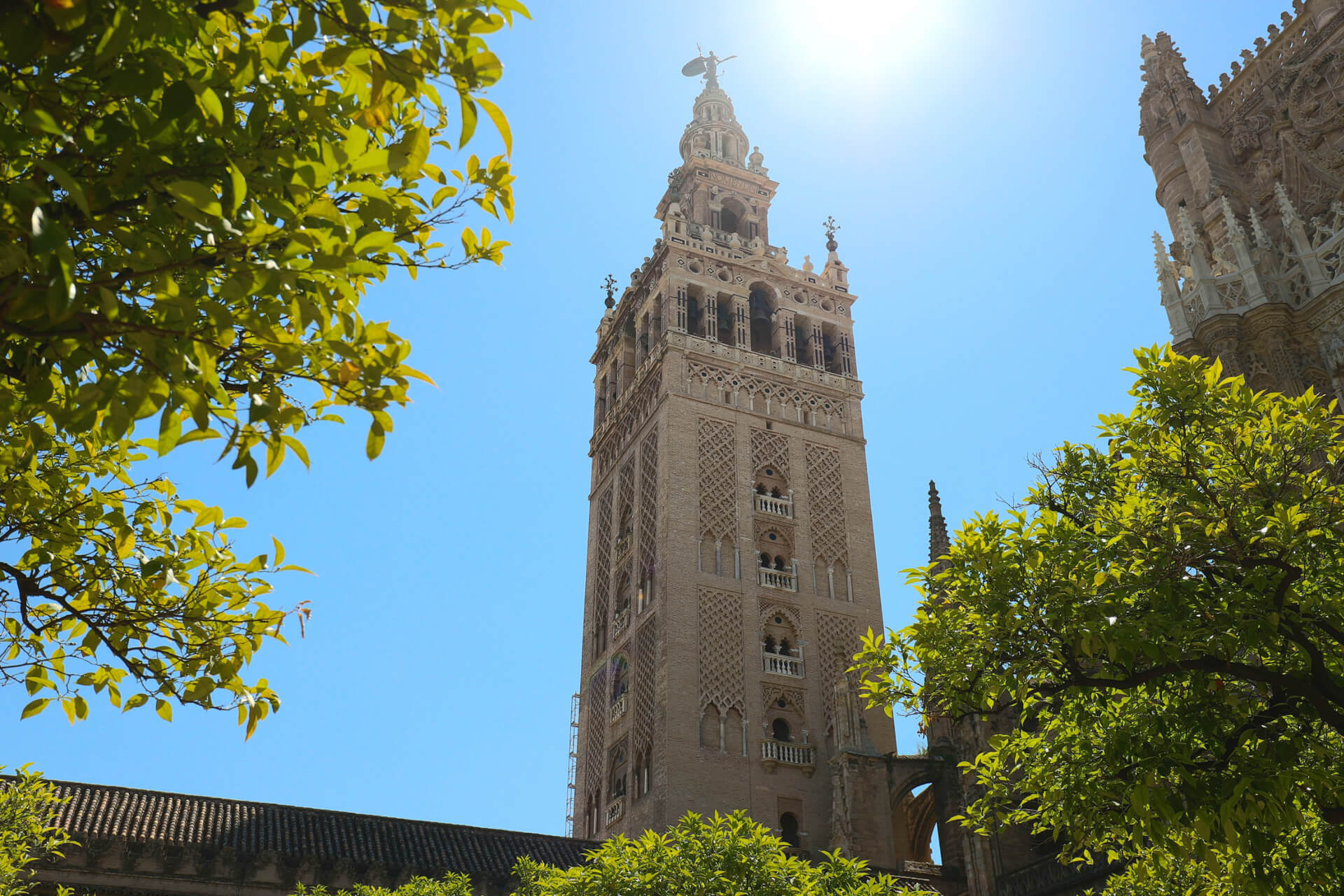
Today, it’s one of the best viewpoints in the city. The tower has an impressive history, with construction starting in the 12th century. Originally adorned with golden spheres that reflected sunlight for miles, it later served as an observatory after Seville fell into Spanish hands.
In the mid-16th century, a belfry was added, increasing the tower’s height to nearly 100 meters, topped by a weathervane, giving it its name. Despite numerous alterations, the tower remains a masterpiece of Moorish architecture, and tourists flock to it for panoramic city views.
Alcázar

This palace, later becoming the residence of Spanish kings, began construction in the 10th century under Emir Abd al-Rahman III. The palace, often called the “eternal spring retreat,” has a poetic beauty. Most of its rooms date from the 14th-16th centuries, with many courtyards surrounded by rooms.
One hall hosted official receptions, and the Courtyard of the Dolls features ornamentation resembling figures. The Courtyard of the Maidens is named after a legend where a hundred beauties were sent as tribute to the Caliph of Córdoba. Visit the Hall of Justice and the Hunting Hall, and the gardens, where peacocks roam and artists gather.
Flamenco Dance Museum

Flamenco, a fiery dance, is an intangible cultural heritage of Spain with many fans worldwide. Originating in the villages of Andalusia in the 18th century, it was first performed by peasants. The museum, located in a historic house in Santa Cruz, was founded by the famous dancer Cristina Hoyos.
A combined ticket allows you to view exhibits and attend a vibrant show held three times daily for about an hour. The museum details flamenco’s history, showcases costumes, castanets, portraits, sculptures, and more.
If time allows, attend a master class to learn the basics of this beautiful dance. The small show hall is always packed, so secure tickets in advance. The performances are so engaging that even children will enjoy them.
Metropol Parasol
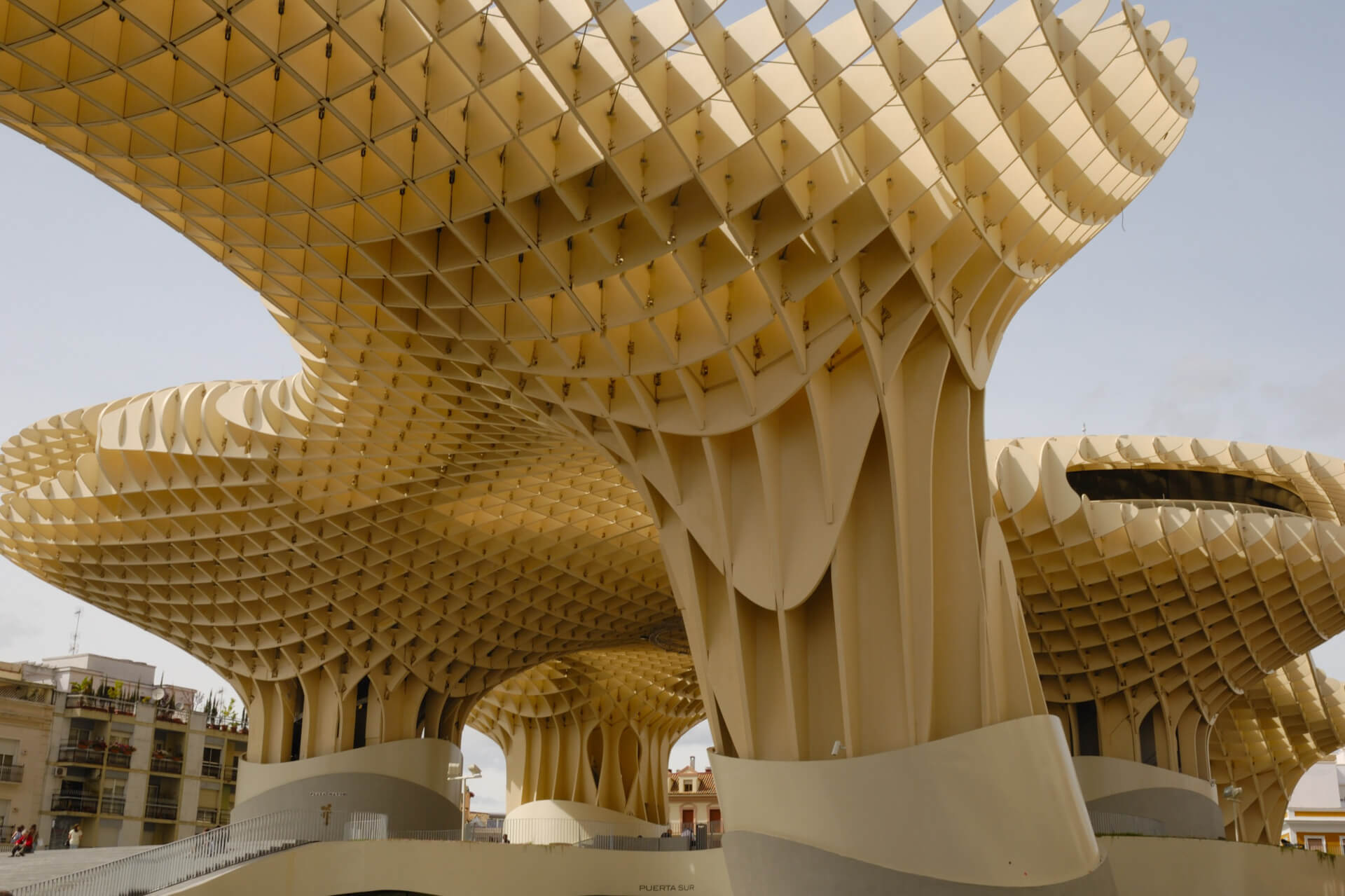
This architectural masterpiece appears futuristic. Located in Plaza de la Encarnación, the city’s center, the project began in the 1990s when ancient Roman settlement traces were discovered during reconstruction. To preserve them, the plan for a car park was abandoned, and the Metropol Parasol project by Jürgen Mayer won.
Construction faced financial difficulties and delays, with high-quality birch wood imported from Finland. The “Seville Mushrooms,” as they were nicknamed, were completed in 2011, featuring six parasols of concrete and wood, covering 5,000 m².
Inside are cafes, shops, and a market selling everything from seafood to fresh fruits and vegetables. An archaeological museum is located underground. At the top, an observation deck offers panoramic city views, accessible by a high-speed elevator.
Basilica of Jesus del Gran Poder
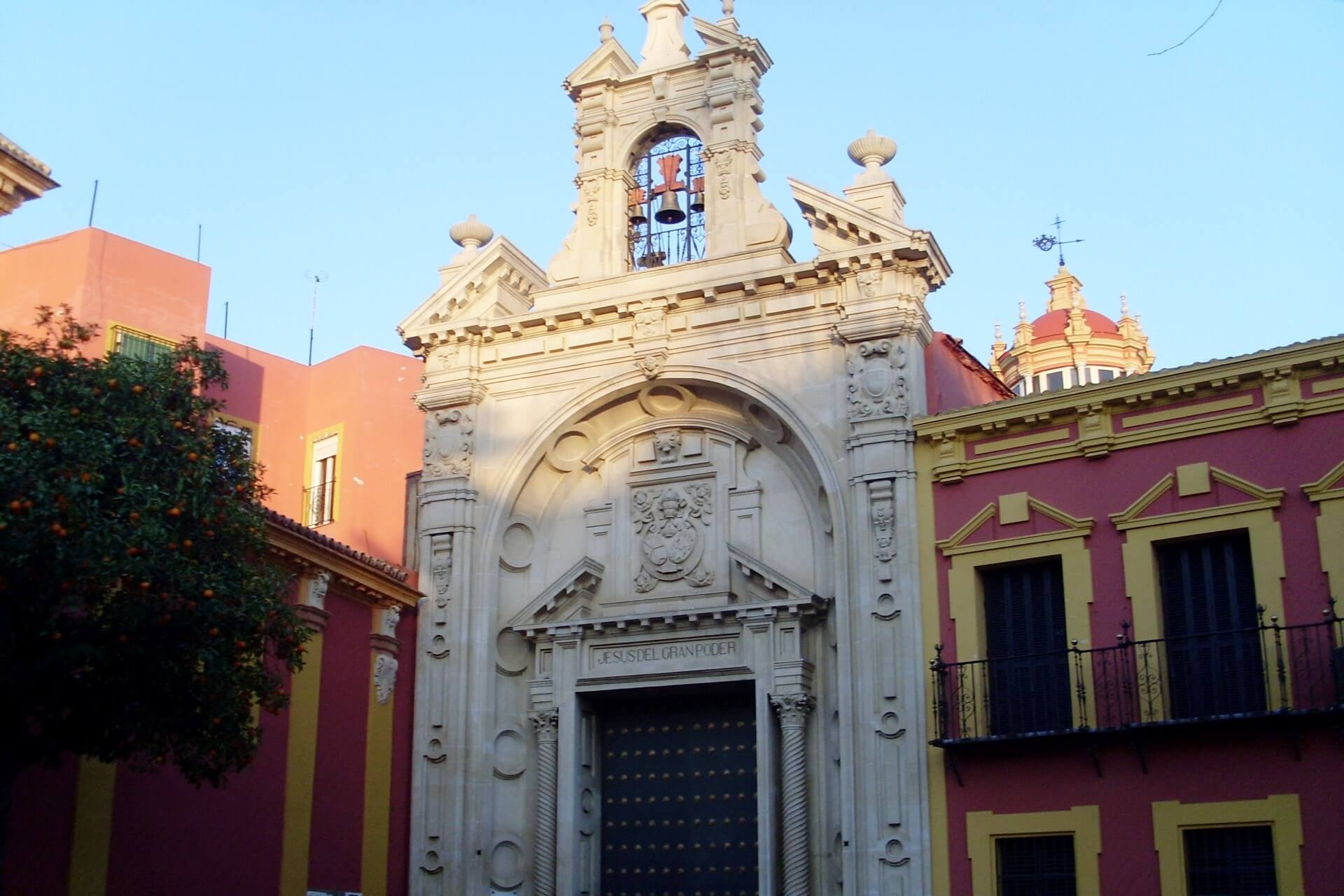
This small Catholic church in the San Lorenzo district, designed by Alberto de Orta and Antonio Delgado, was built in the Neo-Baroque style. Inside, visitors recall the Roman Pantheon and admire intricate carvings and a beautiful altar.
Many come to venerate the image of Christ Señor de Sevilla from the early 17th century, especially on Good Friday. This image is as beloved by Spaniards as the Virgin of Macarena. With lit candles, the faithful pray for help.
Palace of the Dukes of Alba
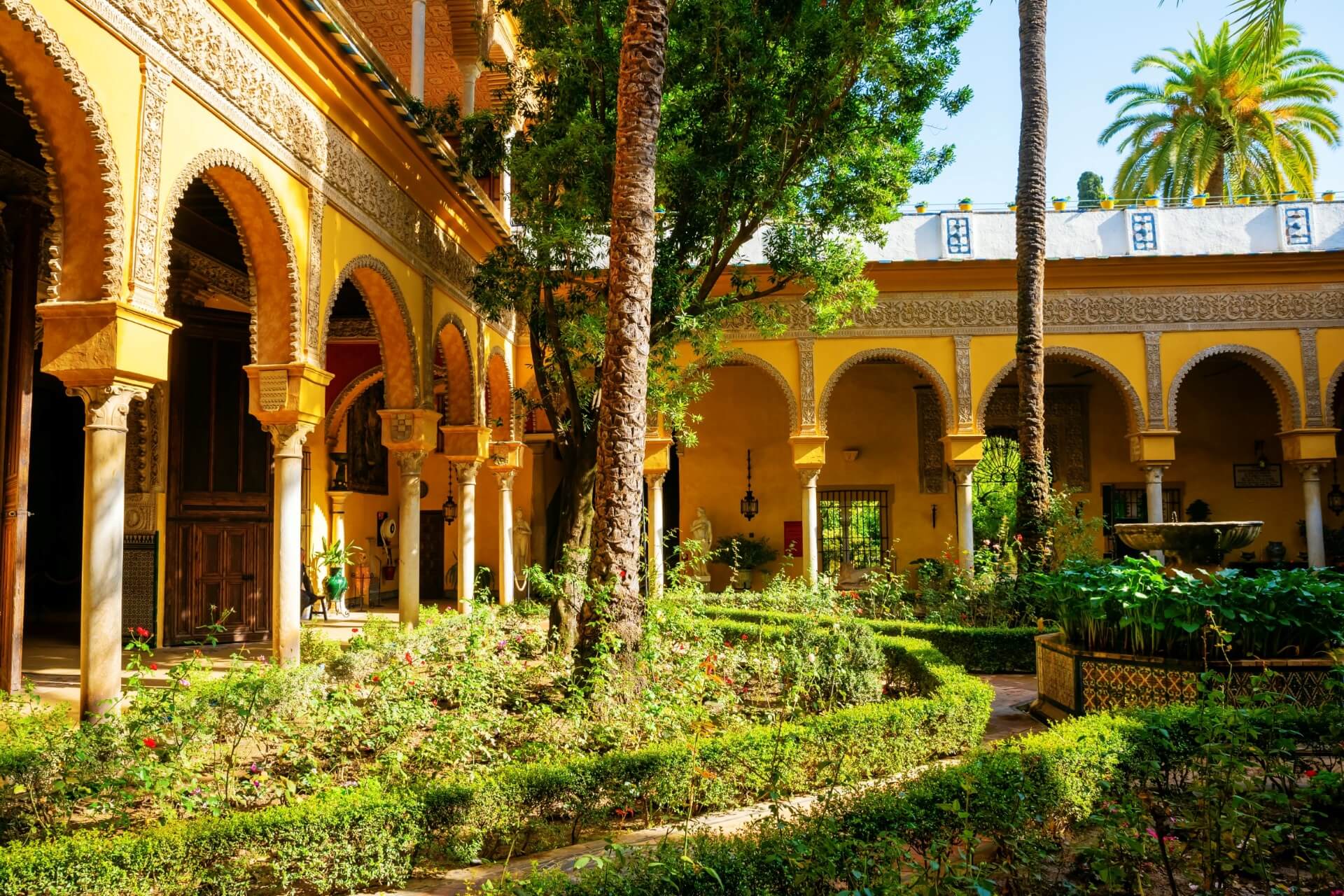
Built in the mid-15th century, this palace was named after the Santa Maria de las Dueñas monastery. Originally constructed by the Pineda family, it was soon sold to the de Ribera family to ransom a relative from Moorish captivity. The new owners added Renaissance features to the palace, which later became the property of the Dukes of Alba.
The palace hosted poet Antonio Machado’s birth and housed Baron Holland, who wrote about Lope de Vega. Reconstructed in the 18th and 19th centuries, the palace now features Gothic, Moorish, and Renaissance styles. The octagonal golden-ceilinged room, patios, fountain, and rare plant gardens are particularly beautiful.
The 15th-century chapel, albeit rebuilt, is where Amerigo Vespucci married Maria Cerezo. The palace also witnessed the marriage of Duchess of Alba and Alfonso Diez Carabantes. Visitors today can see antique furniture, tapestries, dishes, and an extensive painting collection.
Basilica of Macarena
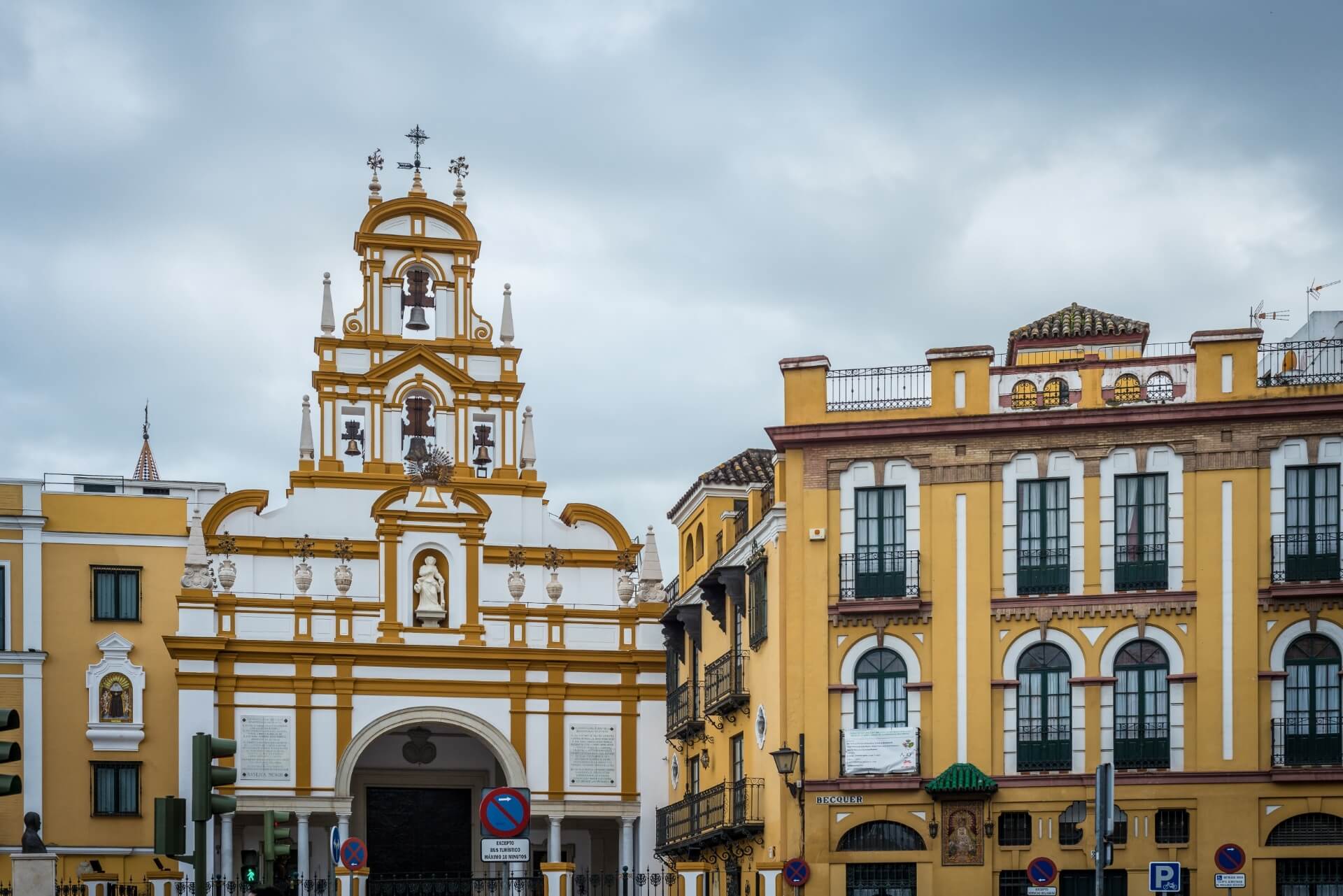
Though not an ancient monument, this basilica is very popular with tourists. Painted in traditional white and ochre, it houses the ancient image of the Virgin of Macarena, whose creator is unknown, but she is called “Queen of Seville.” Her mantle is covered in gold and jewels, holding a white handkerchief, and uniquely, she wears earrings.
During Holy Week, visitors from across Spain come, and the image is paraded through the main streets. Surprisingly, the church also houses bullfighting-related exhibits, as toreros pray for luck and bring offerings. Some have even carried the Virgin’s statue. The church, designed by Aurelio Gómez Millano, was built in the late 1940s and has grown in popularity, admired for its architecture and museum collection.
Alameda de Hércules
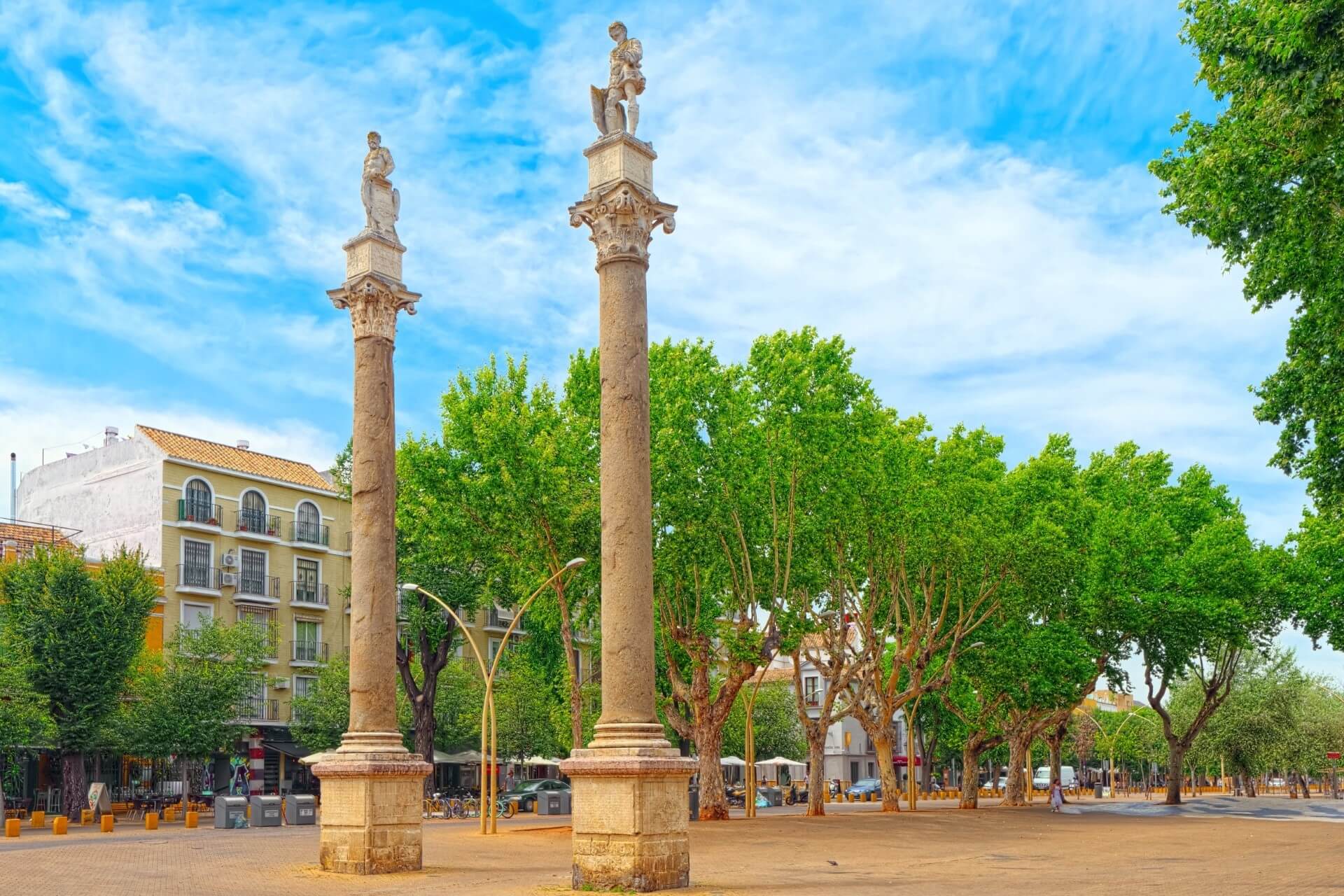
End your city tour here. This public garden, established in the late 16th century, gets its name from rows of white poplars. Previously, the area was a river branch, later cut off and dried. The swampy pond gave way to canals and fountains, with four columns topped with sculptures.
In the 19th century, the garden was popular among the nobility, but post-civil war, it became a poor area associated with prostitution and drug trade. In the early 21st century, Alameda was revitalized, with new poplars, benches, and fountains.
It’s now a nightlife hub with bars, pubs, and discos. The popular Tino bar serves unique Spanish dishes like bull tails with fries and gazpacho, offering a taste of national cuisine at affordable prices.
It’s unlikely you’ll see everything in one day, but how to catch the highlights? Green tour buses only make four stops, and their audio guides aren’t the best. Consider a personal tour with a Russian-speaking guide.
If your plan includes specific places like the Alcázar and Dueñas Palace, head there first. If time allows, explore more or relax in a cozy café, enjoying the city panorama.
Most short-term visitors want to return for a deeper exploration of this ancient Spanish city. Make that wish come true!

